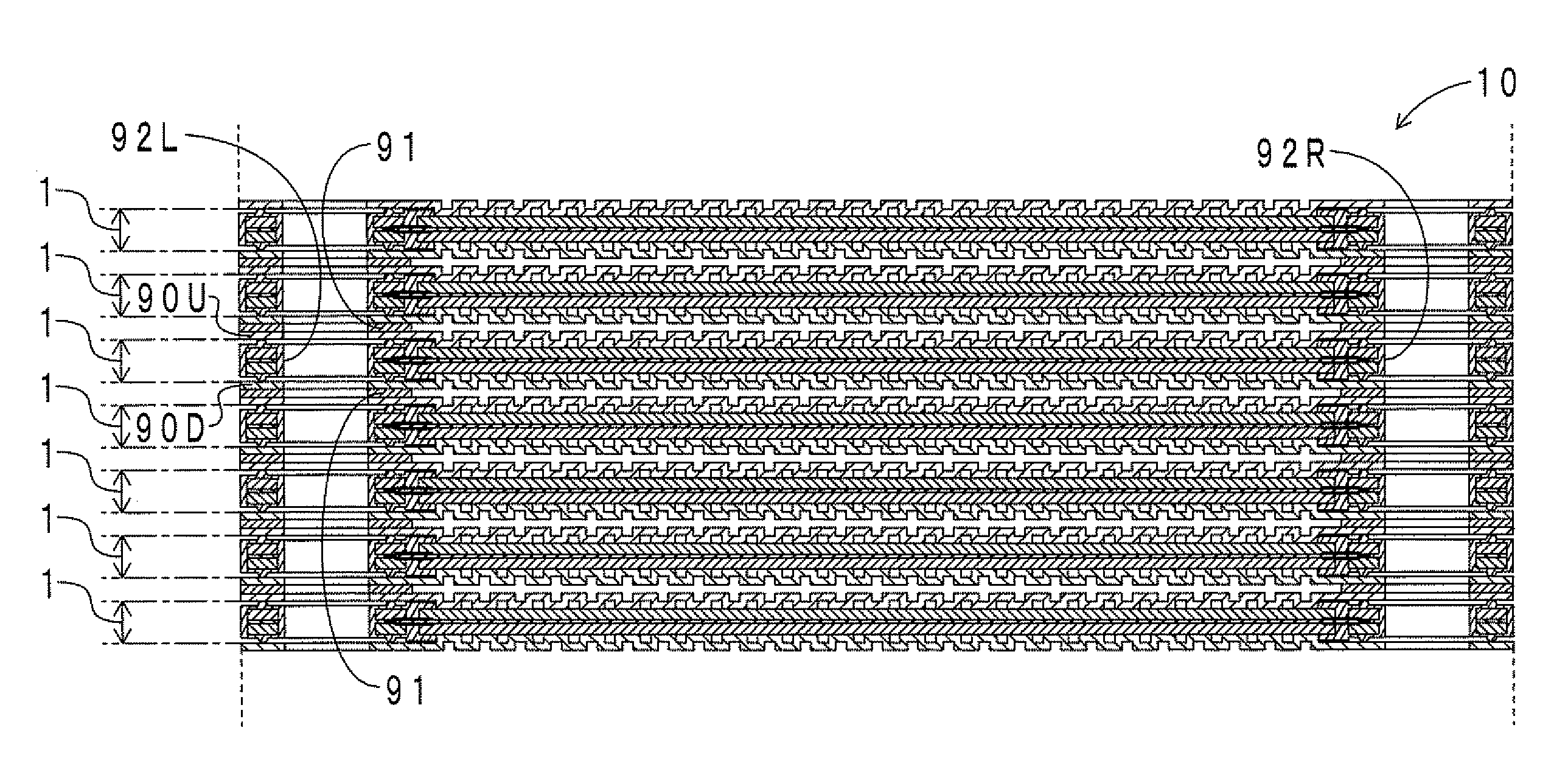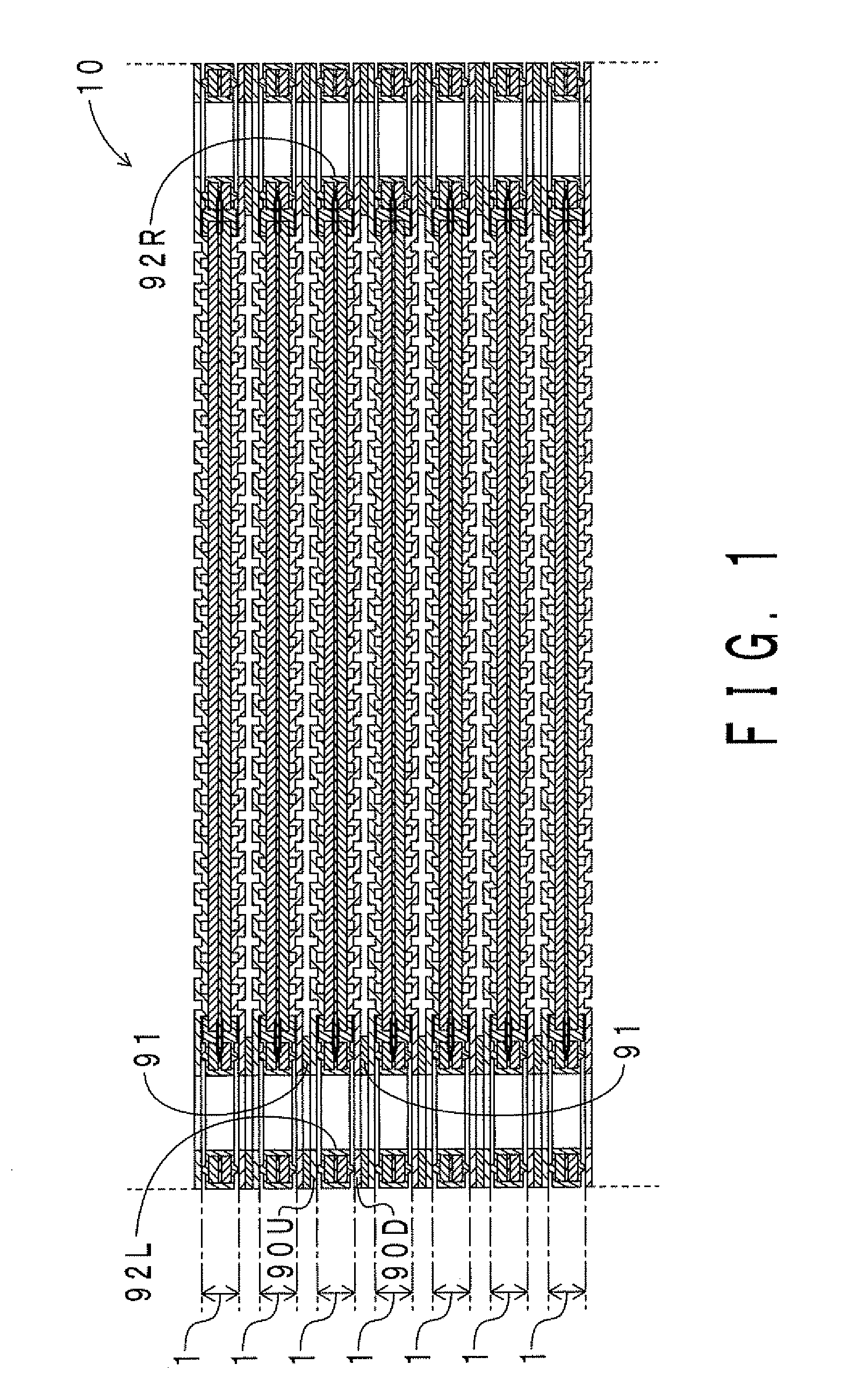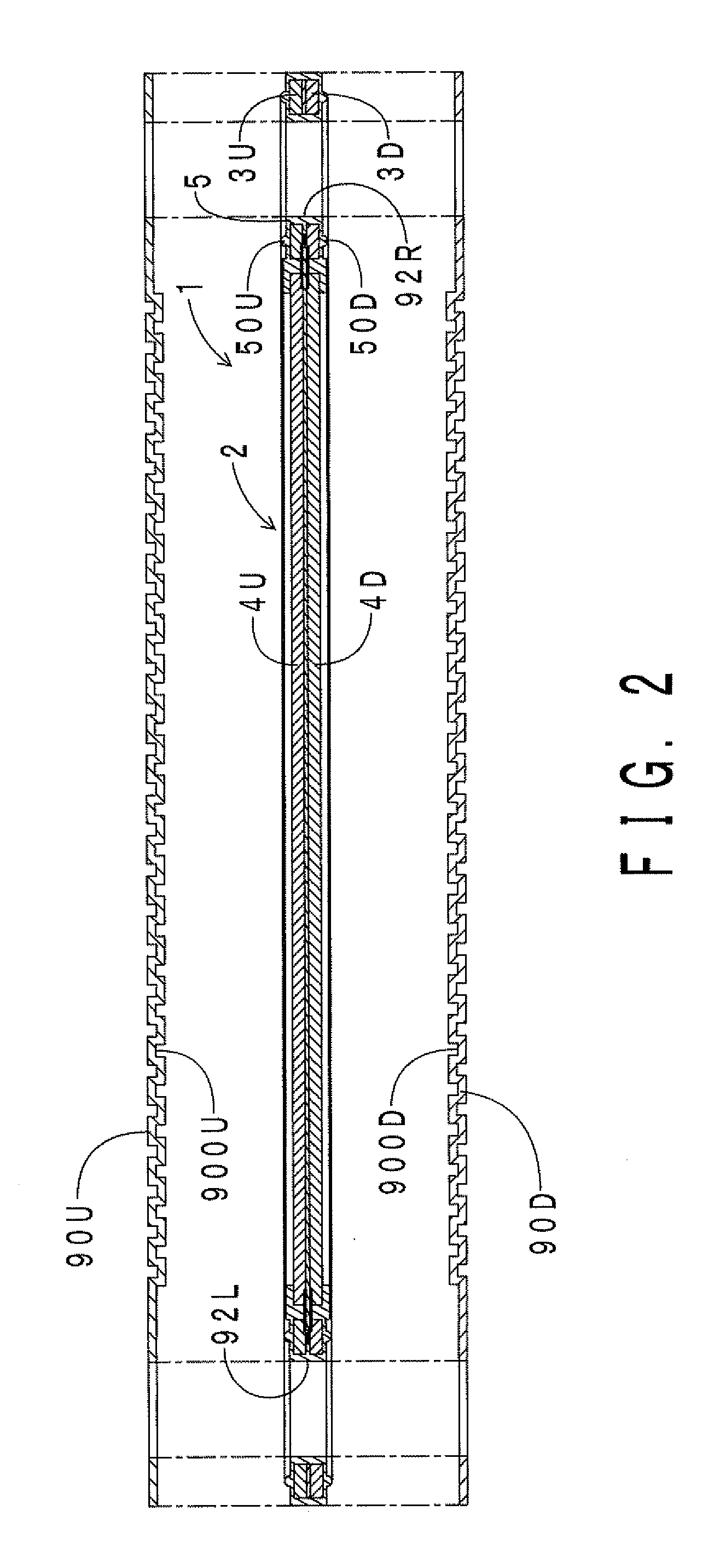Fuel cell, fuel cell stack, and method for manufacturing fuel cell
a fuel cell and stack technology, applied in the direction of cell components, final product manufacturing, sustainable manufacturing/processing, etc., can solve the problems of increasing the manufacturing cost of the fuel cell and consequently the fuel cell stack, the possibility of a product leaking from the end surface of the electrolyte membrane, and the complexity of operation, so as to achieve hardly degraded sealability and adhesiveness, and high sealability and adhesiveness.
- Summary
- Abstract
- Description
- Claims
- Application Information
AI Technical Summary
Benefits of technology
Problems solved by technology
Method used
Image
Examples
first embodiment
Fuel Cell Stack
[0095]The configuration of a fuel cell stack of this embodiment will now be described. FIG. 1 shows a partial sectional view of the fuel cell stack of this embodiment in the stacking direction. FIG. 2 shows an exploded view of a fuel cell and a separator of the fuel cell stack.
[0096]As shown in FIGS. 1 and 2, a fuel cell stack 10 of this embodiment includes a fuel cell 1, separators 90U and 90D, and an adhesive member 91. The configuration of the fuel cell 1 will be described later in detail.
[0097]The separator 90U is formed of metal, and has a rectangular thin plate shape with unevenness. Gas flow paths 900U are formed in the separator 90U by the uneven shape. The separator 90U is arranged above an arbitrary fuel cell 1 (specifically, above a gas diffusion layer 4U described later).
[0098]In a similar manner, the separator 90D is formed of metal, and has a rectangular thin plate shape with unevenness. Gas flow paths 900D are formed in the separator 90D by the uneven s...
second embodiment
[0143]A difference of a fuel cell of this embodiment from the fuel cell of the first embodiment is that the volume of the gasket is small. Thus, only the difference will be described here.
[0144]FIG. 8 shows a partial sectional view in the thickness direction of the fuel cell of this embodiment. Note that portions corresponding to those of FIG. 4 are denoted by the same reference symbols. As shown in FIG. 8, gaskets 5U and 5D are not integrated, but are independent from each other. The gasket 5U is arranged on an upper surface of the frame 3U. The gasket 5U has the rib 50U and a base portion 52U. The base portion 52U is secured to the upper surface of the frame 3U. The rib 50U is provided so as to protrude upward from the base portion 52U. In a similar manner, the gasket 5D is arranged on a lower surface of the frame 3D. The gasket 5D has the rib 50D and a base portion 52D. The base portion 52D is secured to the lower surface of the frame 3D. The rib 50D is provided so as to protrude...
third embodiment
[0150]A difference of a fuel cell of this embodiment from the fuel cell of the first embodiment is that the volume of the gasket is small. Another difference is that a second cross-linking adhesive member is arranged between the frame and the gasket. Thus, only the differences will be described here.
[0151]FIG. 10 shows a partial sectional view in the thickness direction of the fuel cell of this embodiment. Note that portions corresponding to those of FIG. 4 are denoted by the same reference symbols. As shown in FIG. 10, the sheet member 6U and a second cross-linking adhesive member 7U are subjected to cross-linking adhesion with a lower surface of the frame 3U and the upper surface of the frame 3U, respectively. The second cross-linking adhesive member 7U is formed of EPDM, and is arranged on the entire upper surface of the frame 3U. In addition, the sheet member 6D and a second cross-linking adhesive member 7D are arranged on an upper surface of the frame 3D and the lower surface o...
PUM
| Property | Measurement | Unit |
|---|---|---|
| temperature | aaaaa | aaaaa |
| temperature | aaaaa | aaaaa |
| temperature | aaaaa | aaaaa |
Abstract
Description
Claims
Application Information
 Login to View More
Login to View More - R&D
- Intellectual Property
- Life Sciences
- Materials
- Tech Scout
- Unparalleled Data Quality
- Higher Quality Content
- 60% Fewer Hallucinations
Browse by: Latest US Patents, China's latest patents, Technical Efficacy Thesaurus, Application Domain, Technology Topic, Popular Technical Reports.
© 2025 PatSnap. All rights reserved.Legal|Privacy policy|Modern Slavery Act Transparency Statement|Sitemap|About US| Contact US: help@patsnap.com



